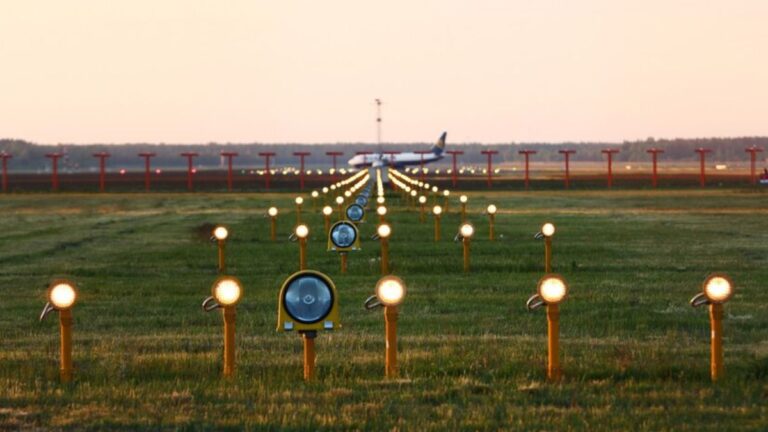Understanding Avionics: A Comprehensive Guide
Made achievable by a careful balance between advanced technology and human creativity, navigating the huge expanse of the sky is a wonder of modern engineering. Avionics—the advanced electronics that enable aircraft to communicate, maneuver, and run with amazing accuracy—lie at the center of this system. Avionics has transformed aviation from guaranteeing perfect landings in bad weather to enabling real-time ground control communication. These systems are the unseen hands leading every aircraft, military or commercial, to its target.
Avionics’ Evolution in Contemporary Aircraft
Early in the 20th century, aviation was born, and avionics started its path. Early aircraft frequently left pilots to navigate visually; they used simple equipment for communication and navigation. However the fast development in electrical technology, particularly in and during World War II, changed the course of aviation. Avionics of today are not at all like the fundamental tools of the past. They include flight control electronics, navigation systems, and communication radios, among other broad categories of equipment. These devices are subtly linked to give pilots real-time data and control, therefore enabling safer, more effective flights.
Systems of Communication
The communication technologies that link pilots with air traffic controllers, ground staff, and other aircraft define avionics fundamentally. From simple voice radios to sophisticated digital data linkages, these systems have been developed to provide faster and more accurate information transfers. Clear and continuous communication over great distances is ensured in today’s aircraft using VHF (Very High Frequency) radios, satellite communication, and data link technologies, among other elements of communication systems. Aircraft operating within restricted airspace generally use VHF radios for communication. Running between 30 MHz and 300 MHz, they give pilots and ground control unambiguous verbal contact. Long-haul flights, especially when aircraft are flying over oceans or rural locations where VHF coverage is limited, use satellite communication (SATCOM) systems. Even in the most inaccessible parts of the world, these gadgets provide a continual connection.
Navigation Systems
Another essential part of avionics is navigation, which guarantees that aircraft may get from one point to another safely and quickly. To offer exact location data, modern navigation systems combine ground-based and satellite-based technologies. The most famous system now in use provides precise location data anywhere on the planet, and it’s called GPS. To provide redundancy and dependability in addition to GPS, aircraft can rely on inertial navigation systems (INS) and VOR (Very High Frequency Omnidirectional Range). In situations where GPS signals might be damaged, INS is a great tool since it employs motion sensors and gyroscopes to determine the aircraft’s position without depending on outside signals. Conversely, VOR gives pilots directional guidance from ground-based stations, therefore enabling their en-route navigation.
Flight Control Systems
Modern avionics depend on flight control systems since they give pilots the means to steer the aircraft. For control of flight surfaces, including ailerons, rudders, and elevators, traditional aircraft made use of mechanical links and cables. But thanks to avionics, fly-by-wire systems—where electronic signals replace hand controls—offer more accuracy and less mechanical complexity. By use of autonomous flight path adjustments made possible by fly-by- wire technology, performance is optimized, and safety is raised. Additionally included in this system are autopilot features that let the aircraft keep speed, direction, and altitude with minimum pilot input. Under high stress, like extreme weather or an emergency, autopilot systems can take over important tasks, therefore lowering the pilot’s burden and guaranteeing better flying conditions.
Aircraft Avionics
Aircraft avionics is mostly based on safety and that is why current systems are built with several redundancies to guarantee the best degree of dependability. Many sensors and warning systems included in aircraft monitor anything from engine performance to weather conditions. For pilots, these sensors give real-time data so they may make wise decisions and respond fast to possible risks. TAWS, one of the most critical safety systems, alerts pilots if the aircraft runs over terrain. TCAS also monitors the airspace around the aircraft, informs pilots of nearby aircraft, and suggests evasive action.
Avionics’ Future
The avionics of the future present fascinating opportunities as technology develops. Redefining the aviation scene are innovations, including autonomous planes, artificial intelligence, and next-generation communication systems. For more difficult flight operations, autonomous technologies could take control, therefore relieving pilot effort and improving safety. AI-driven avionics could improve pilot situational awareness and decision-making by evaluating massive amounts of data in real-time.
Conclusion
From navigation and flight control to communication, these sophisticated systems are the invisible forces maintaining seamless and safe air travel. The fast speed at which technology is developing guarantees even more creativity in avionics, stretching the boundaries of what is feasible in the heavens.







